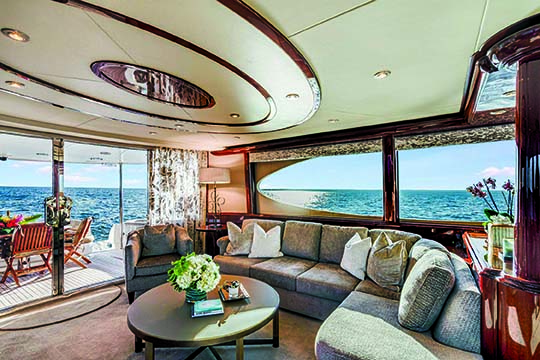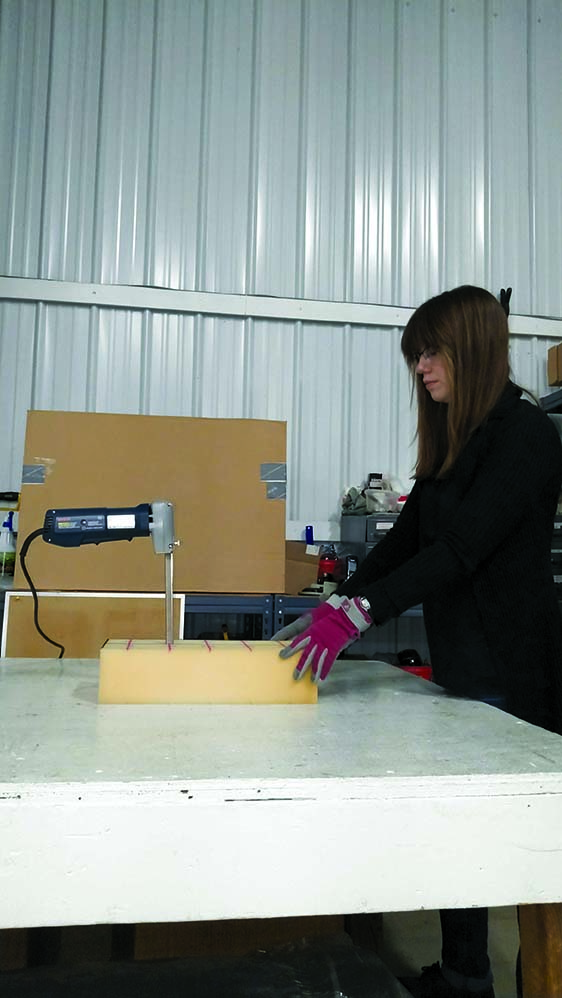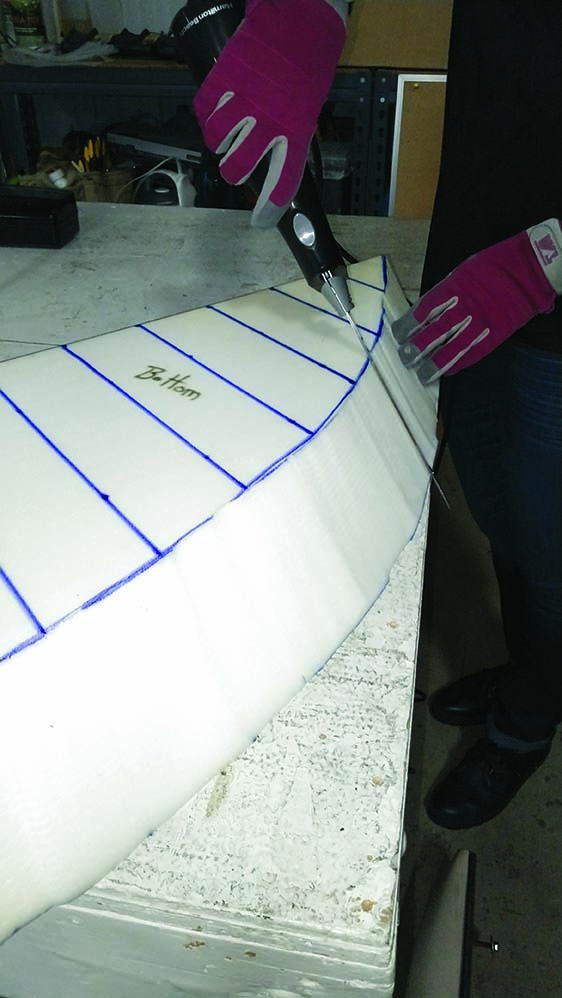The wonderful (confusing) world of foam

The marine industry needs foam, and a lot of it, as do a hundred other industries that provide comfort and support. From exercise equipment to airplanes, cars and furniture in our homes, there is foam available for nearly every use.
Jumping into the world of foam has been a wondrous adventure, yet a bit overwhelming at the same time. The more you learn, it seems, the less you really know. So, I went to the folks who could really help me: Active Foam Products Inc. With locations in Illinois, Wisconsin, Michigan and Ohio, Active Foam goes far beyond manufacturing and supplying foam to various industries. The people at this company are also educators and have permitted me to use some of their information. When you’re armed with some very important basics, you will have a much less confusing journey into upholstery-making. Keep in mind that we are only scratching the surface here.
The recipe for high performance
The first profound statement that we all need to memorize is “The more urethane the foam contains, the better the foam performs.” Starting with a 1-inch-thick foam batter that is poured into a 30-foot-long trough, the foam grows to 36 inches in height. This long bun of foam is then cut into manageable-sized sheets for our end use. The final product is determined by what all went into the foam batter.
I won’t attempt to dive into that here. However, the type, quality, density and firmness of the foam was decided before the pouring process began. Many variations of foam can be made by adjusting the formulas, including fire-rated foam, ever-dry foam, floatation foam and others.

Decide quality level first
The quality level groupings are indicated by a two-letter abbreviation. CV, or common variety, foams are sufficient for many marine applications. HR, or high-resilience, foams are better because they reduce failures such as bottom-out, fatigue and dishing whereby the foam crushes, goes flat or dips in the middle.
The quality level of each foam grouping is often selected based upon cost. Once you’ve decided what quality level is best, the next thing to do is to select the density, followed by the firmness.
How to choose correctly
So, how do we know what to order, what to buy and what formula will be the right foam for the right job? Active Foam makes it easy by providing an ID badge for every foam it sells. This badge is a real time-saver!
Active Foam gives its foams a group prefix, such as CV, followed by a four-digit code. The first two digits represent the density of the foam. A low number will allow the weight of a body to compress the foam easily. A higher number will provide more resistance or support to the person who just sat on the cushion. The last two digits of the code represent firmness or comfort. Taking advantage of the ID badge allows you to quickly identify the quality group, density and firmness of a particular foam, making the decision among many foams much easier.

Adding thickness to the mix
Note that thickness isn’t stated as a factor. Yet, it is somewhat of a factor in that as thickness increases, it has the same result as an increase in firmness. For example, I may need a 4-inch-thick cushion and a 2-inch-thick cushion, yet both need to feel the same when I sit on them. So, what should I buy? In this case, I would buy a 22 density in 4-inch and a 25 density in 2-inch. However, both would need to be a 35 in firmness so that they feel the same.
Layering
Stacking layers of foam will result in wonderful products like a foam-topper bed mattress. A common rule is that for every layer you stack, reduce the density by 50%. Otherwise, your bed will be hard as a rock! We start with a dense/firm layer on the bottom and get less dense/firm in each layer. Your foam supplier will help you choose the right products for layering.

Cutting and shaping
Cutting and shaping foam is as technical as you want to make it. In our shop, we use a standard foam cutter that has been mounted to a table. This makes cutting cushion and bolster foam simple. For cutting V-berth bedding and beveled edges, an electric carving knife will do the trick if you have steady hands or a second person to help you guide the foam. For those of you who need custom shapes too intricate for these common tools, Active Foam can cut any shape imaginable for you.
Often, you will need to glue two blocks of foam together to obtain the width or length desired. Foam sheets typically come in 24-, 27-, 30- and 54-inch widths and 82-inch lengths. While special foam adhesive spray is available, common fabric adhesives work well. Choose adhesive sprays rated between 60 and 75 in strength. Higher than that, the adhesive may begin to dissolve the foam. Always test the adhesive on a scrap piece before spraying the finished pieces.
Volume pricing
Foam is purchased in volume by adding the thickness of all sheets in your order. For example, if you purchase two 4-inch-thick sheets and two 2-inch sheets, you’ll get a discount for buying a total of 12 inches of foam in total height. Any combination of thickness will add up to discounts at 12, 24 and 48 inches.

Additional products add value
Foam is just the base of upholstery construction. There are many other products available to upholsterers. These include foam wraps in various thicknesses less than 1 inch, scrim (foam wrap with a fabric backing), Dacron® fillers, pillow fill and so much more. These products are used to level foam edges, fill in corners or dips, and provide extra comfort.
Choosing the right wrap can be as daunting as choosing foam. In most cases, once you’ve chosen a particular wrap best suited to your product line, you can stick with it and not have to keep on searching. Don’t be surprised to discover that out of the hundreds of choices available, your shop will likely choose a combination of four or five products that can be used for 99% of all your upholstery products and uses. For an Active Foam catalog that lists all the products and ID badges, visit ActiveFoam.com.
Russ Griffin is co-owner and instructor of Northcoast Marine Specialties LLC. Northcoast operates a canvas-making training school in Port Clinton, Ohio.
 TEXTILES.ORG
TEXTILES.ORG 






